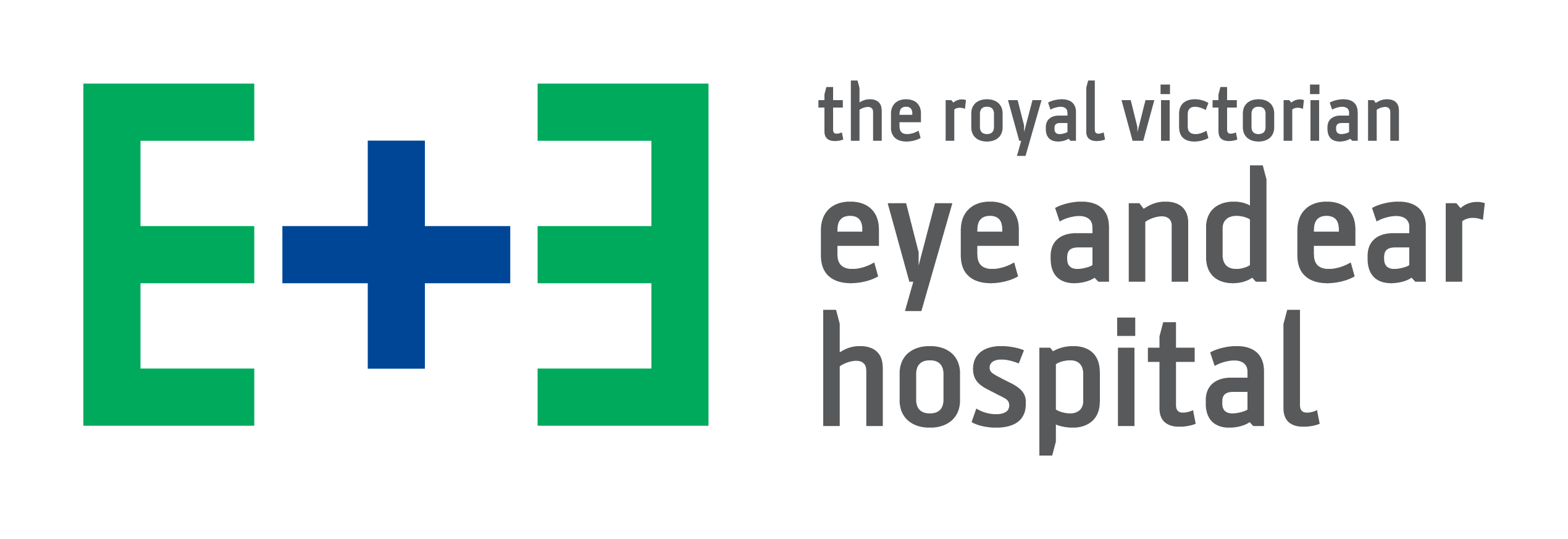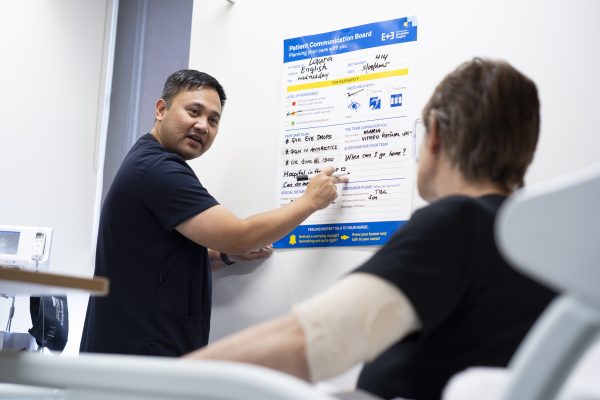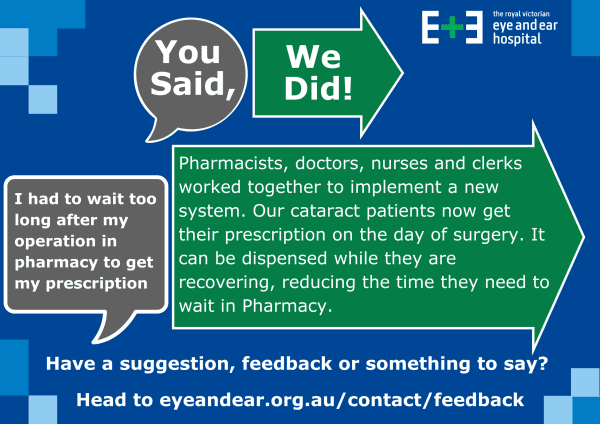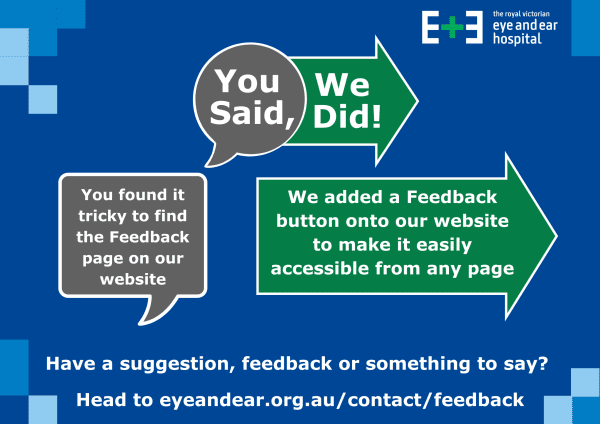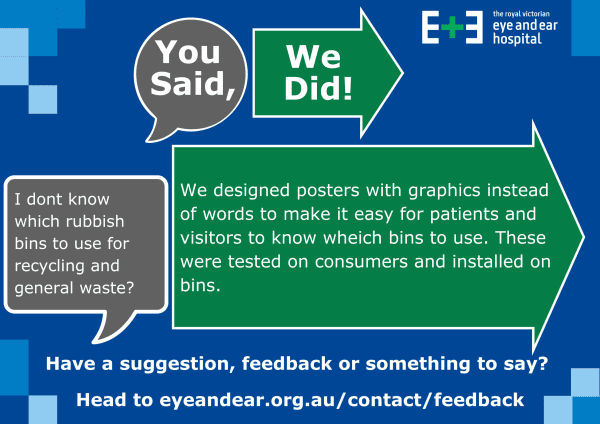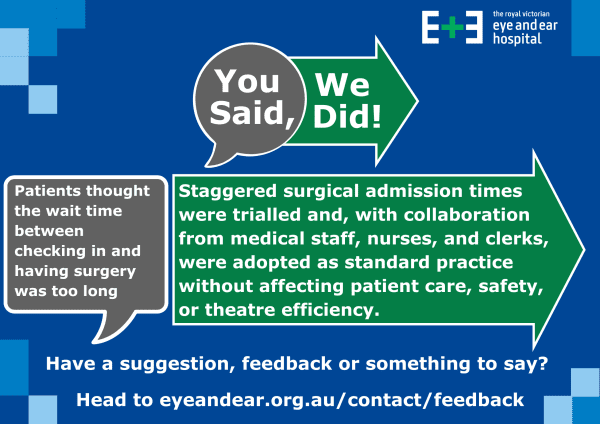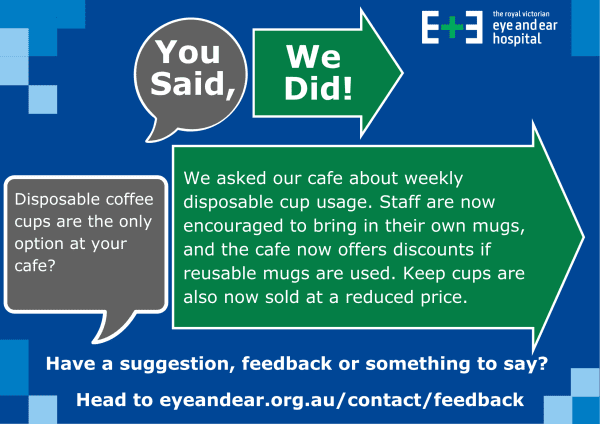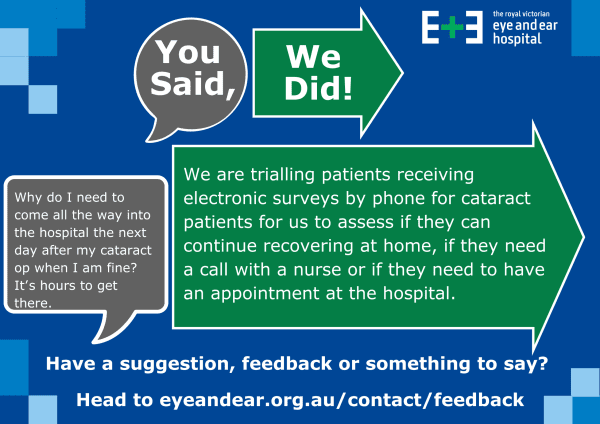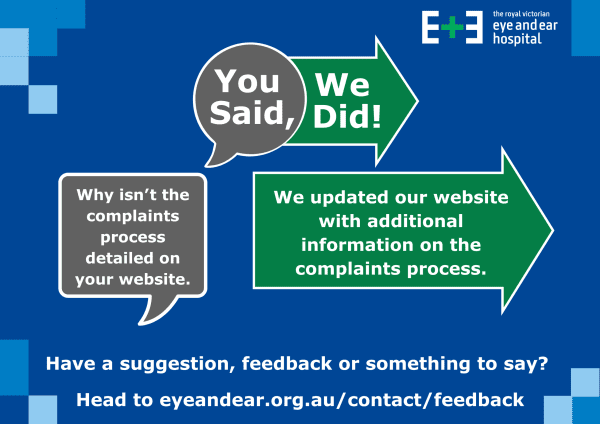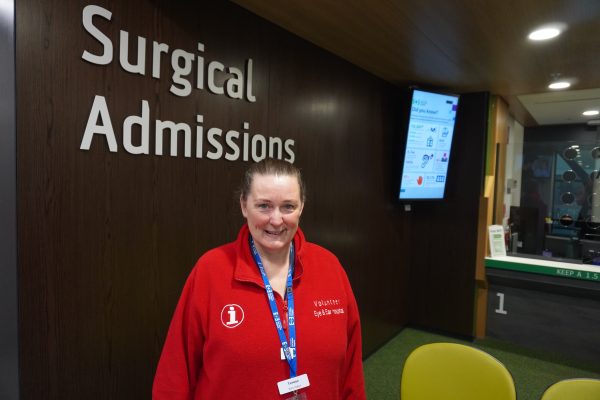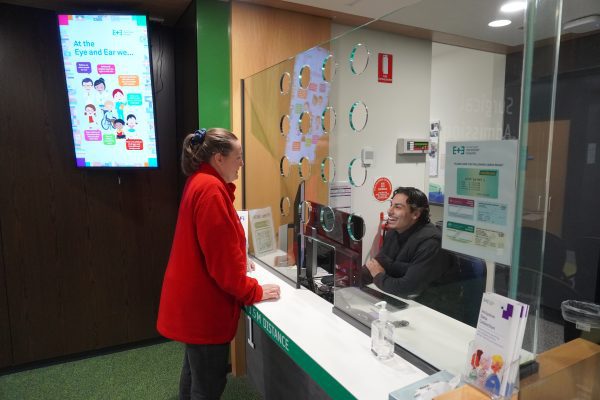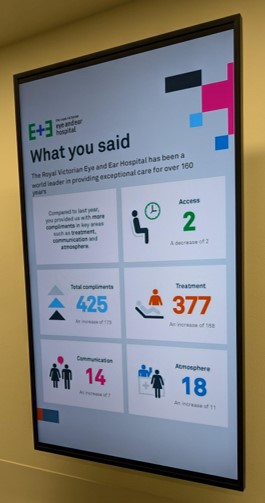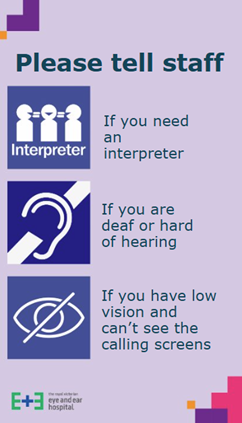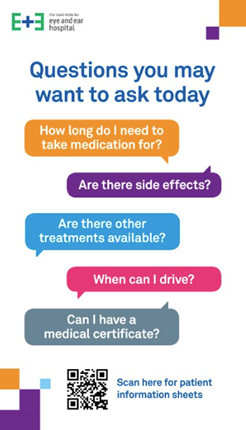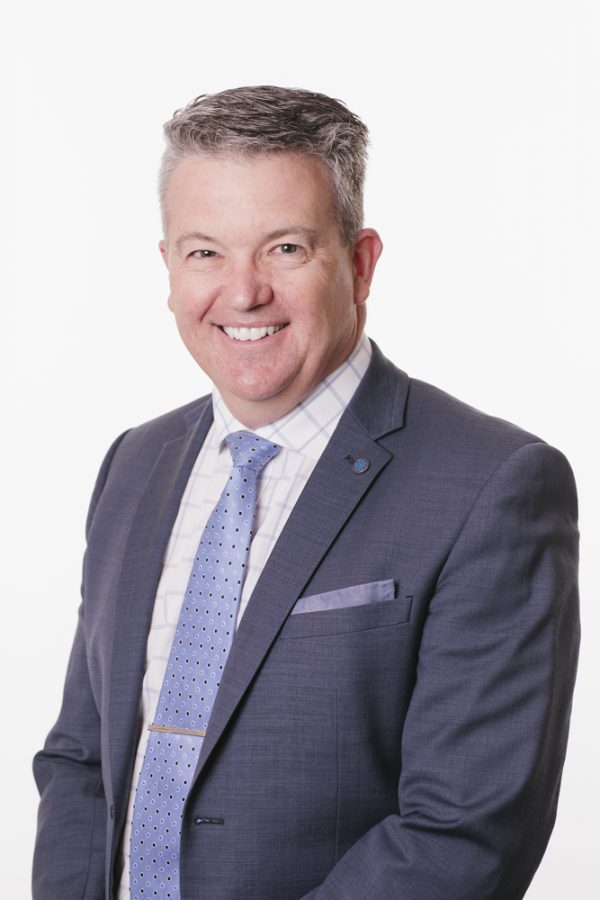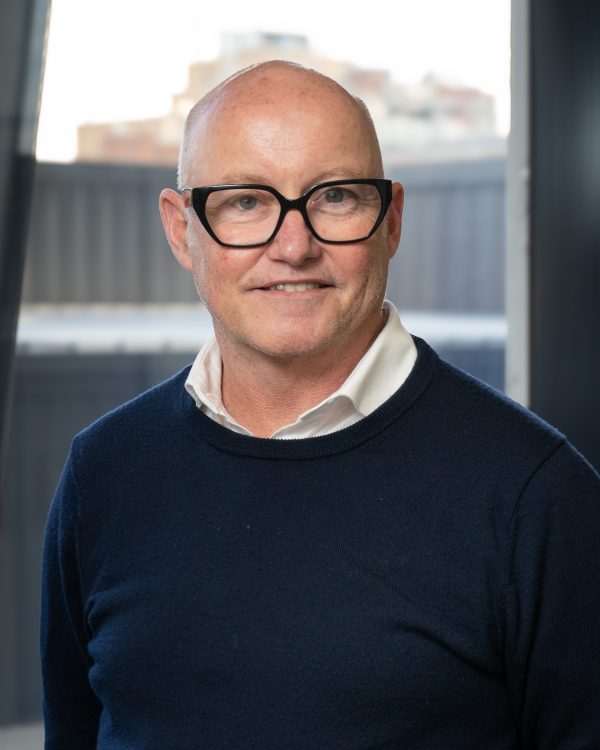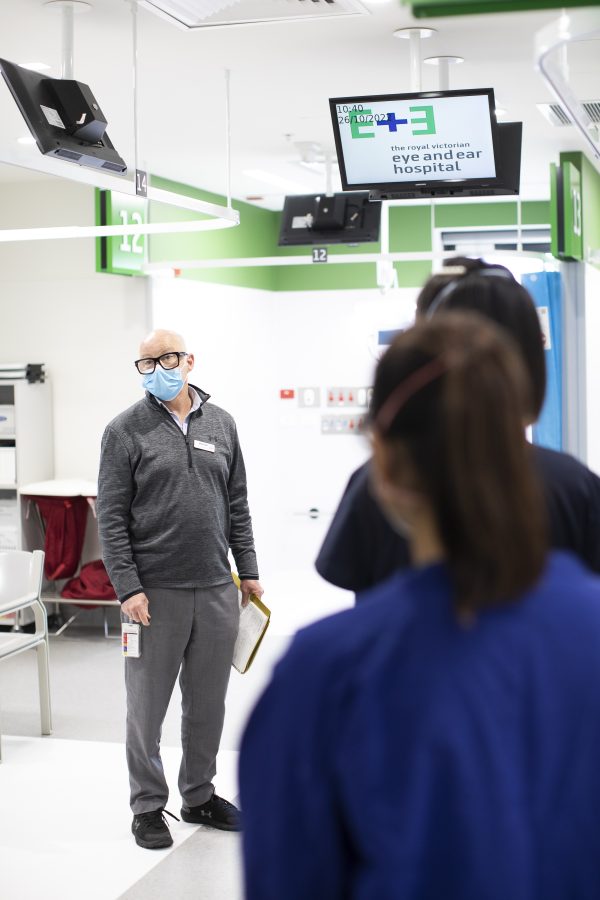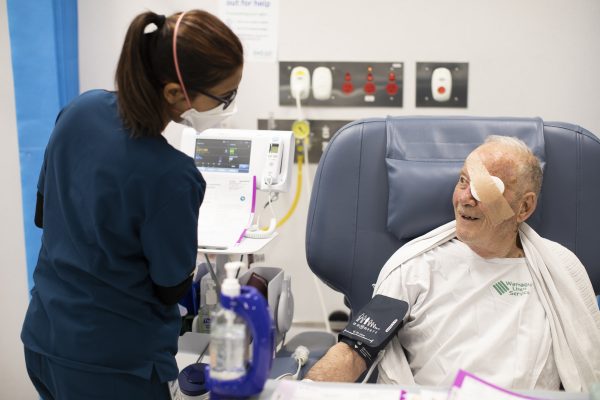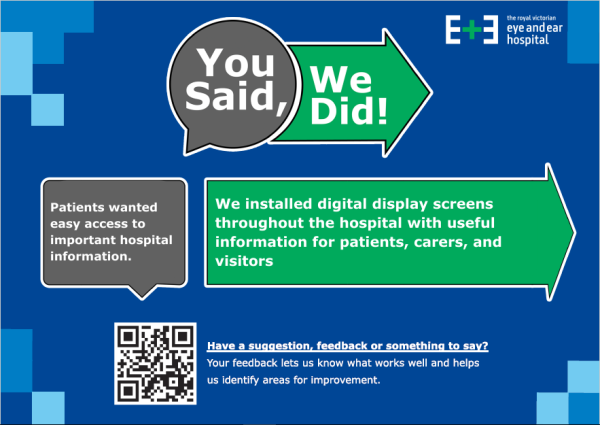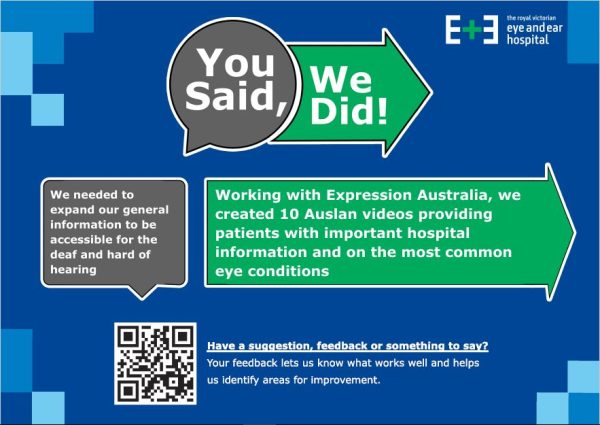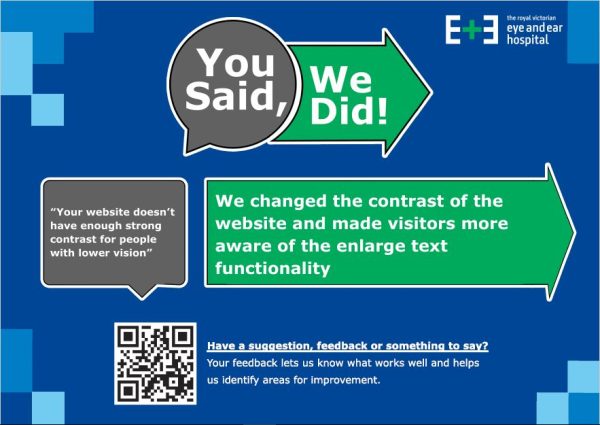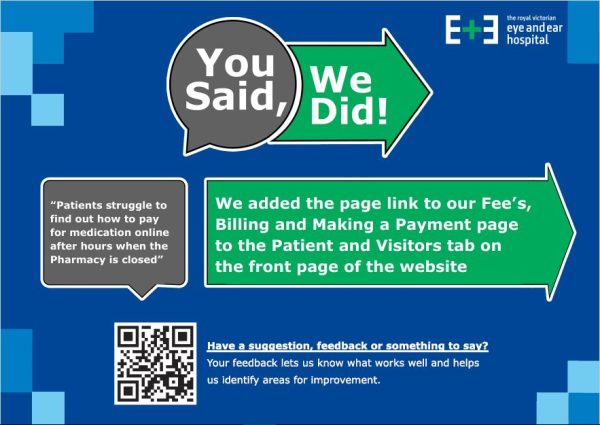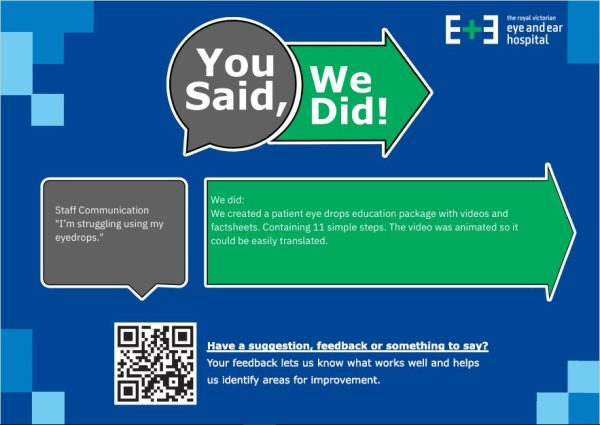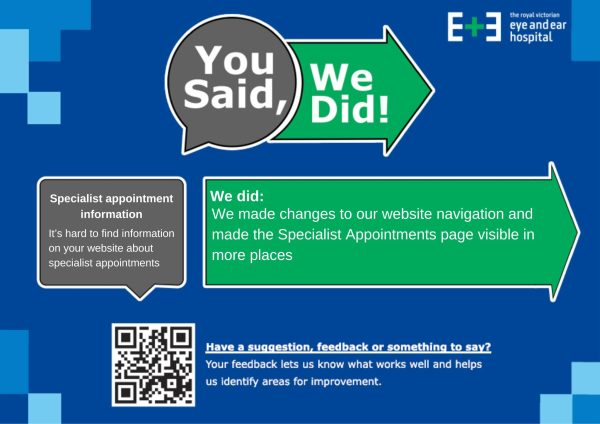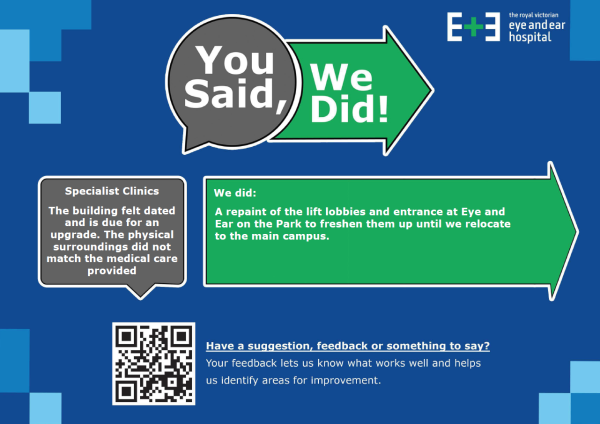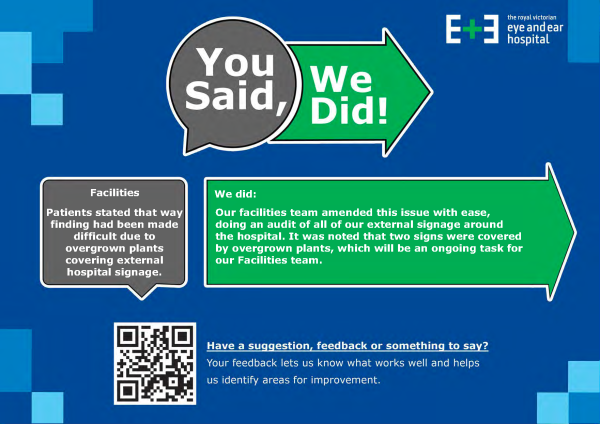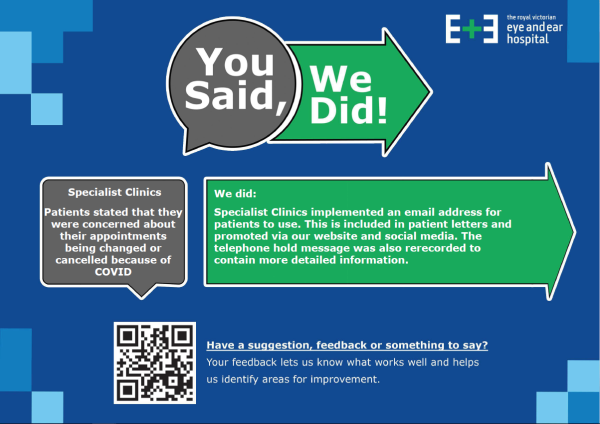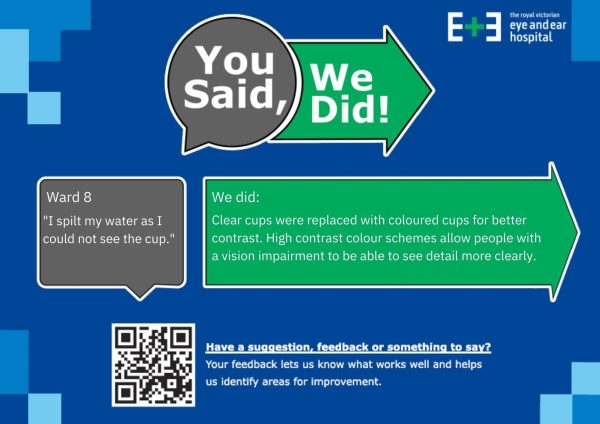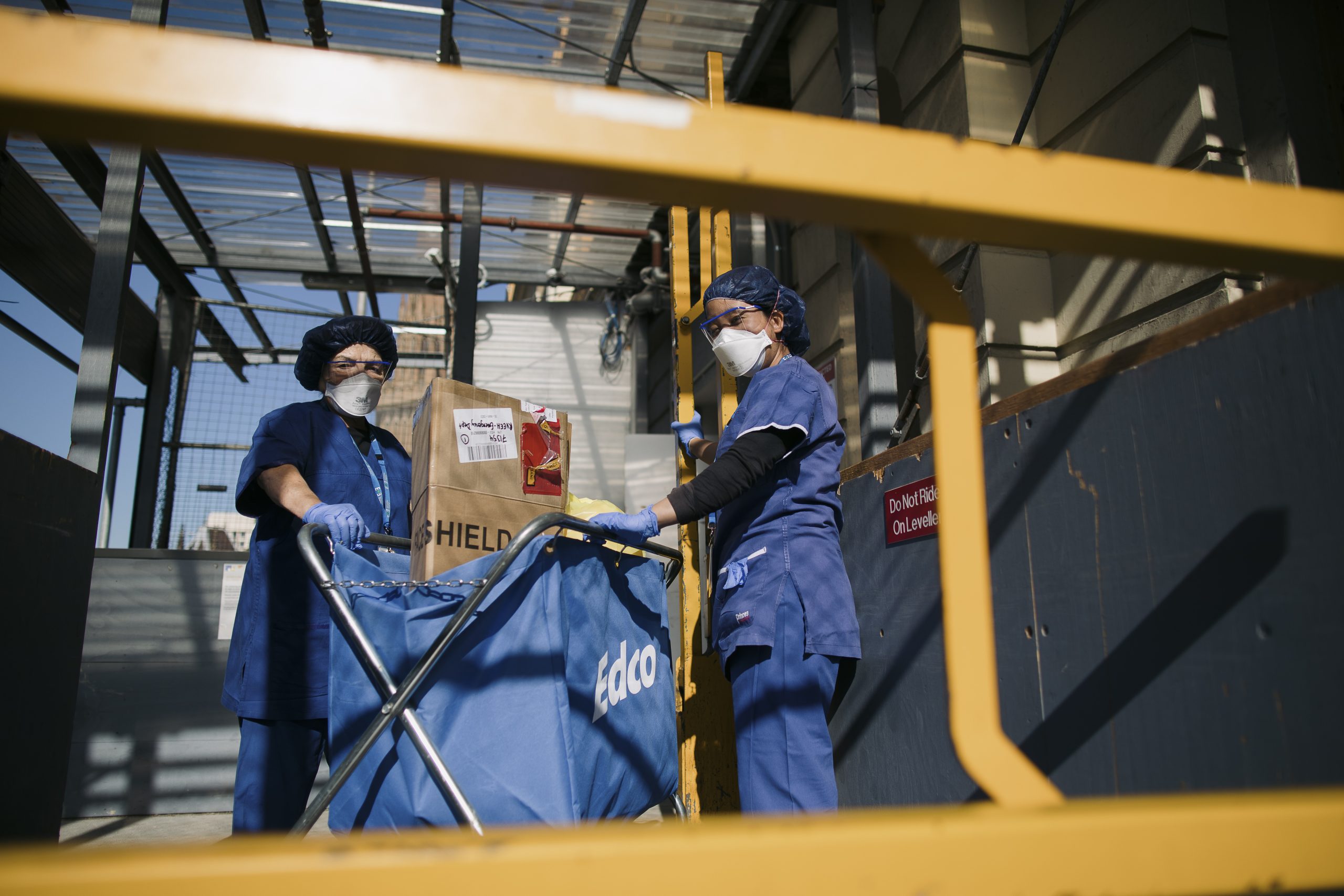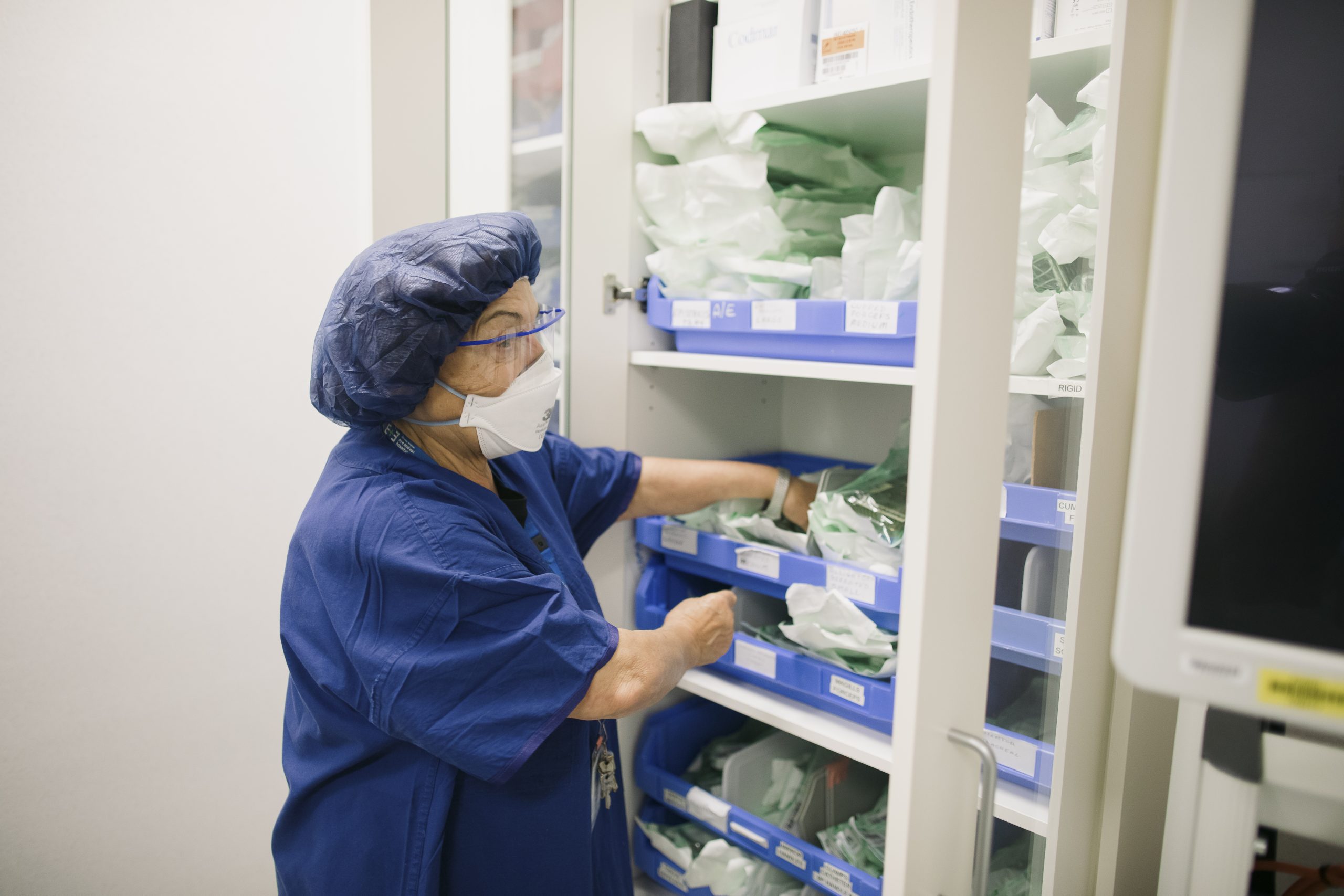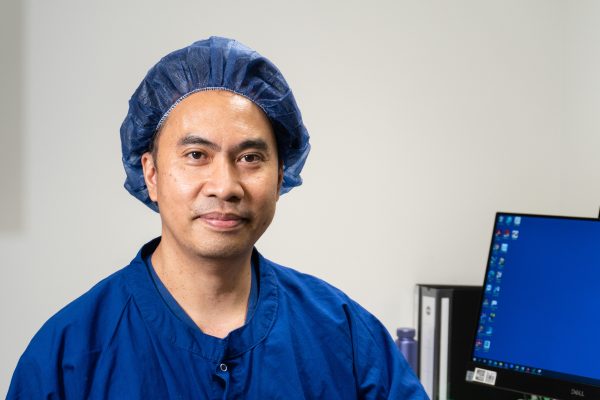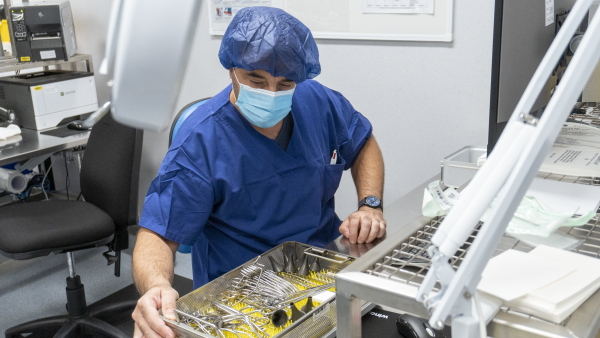
The Social Services Unit is an important part of the Eye and Ear that provides support to our patients. The unit has continued to deliver quality care to our patients via patient transport, interpreting, social work or family violence support. In 2020 the hospital also appointed a dedicated Disability Liaison Officer to support patients who needed this assistance.
Maureen Plain, Manager of Social Services, explains that it has been a challenging yet rewarding time for the team as they adjust to the impacts of COVID-19.
“The resilience of the team and the entire healthcare sector has been outstanding to witness and be a part of. Supporting our patients is our number one priority and each team member has adjusted their practice to ensure patients receive the best care possible,” says Maureen.
In some cases, transport and telehealth services came together to reinforce quality care for patients.
“We utilise the Red Cross for our patient transport services. In a normal year, this service is fairly self-sufficient, however it has been in and out of operation due to lockdown restrictions, which has meant our team need to think outside the box and explore options for our patients on a case-by-case basis,” Maureen explained.
Currently requests for patient transport are accessed via telephone and Telehealth is used where appropriate. Telehealth is especially useful when patients aren’t able to use public transport or catch a taxi to the hospital.
“COVID-19 resulted in the suspension of external onsite interpreters during peak stages, with these bookings being transferred to telephone. At first, this was disruptive, with bookings difficult to change, however the process has adapted to accommodate sudden lockdowns and we can now quickly change bookings to telephone when needed.
We have also seen the development of an online portal offering an alternative to these requests which will reform our translating services and reduce the time taken to process them,” Maureen explains.
Strengthening our hospital’s response to family violence (SHRFV) has been operating in public hospitals since 2018 in response to recommendations from the Royal Commission into Family Violence. SHRFV has been supported at the Eye and Ear via the introduction of family violence procedures and staff training. These enhancements have helped our staff develop the knowledge and skills to identify family violence, assessment and referral processes.
In line with the recommendations, the Eye and Ear also implemented the Multi Agency Risk Assessment Management (MARAM) framework. This ensures services are effectively identified and assessed in order to manage family violence risk. MARAM also highlights issues around family violence, not just for patients but also for staff.
Maureen noted that the Eye and Ear saw a decline in referrals during lockdown periods, but an increase once lockdown ceased, which was reflective of what was occurring in the community. The opportunity for survivors of family violence to leave the home is reduced during a lockdown and therefore the opportunity to seek assistance is also lessened. COVID-19 has provided many pressures for everyone, and this has only further exacerbated family violence within homes.
The Eye and Ear takes a holistic approach to patient care. Treatment is provided with consideration of a patient’s mental health and social wellbeing to solicit the best health outcomes.
These issues need to be addressed in order to support discharge planning, continued engagement with the hospital as well as future treatments. It is vital that all patients are provided with the opportunity to be referred to a social worker for more comprehensive support.
Throughout the pandemic, new programs have been implemented and several improvements have been made. The hospital has seen a high degree of collaboration and leadership on many fronts. Interestingly even though patient numbers have reduced, social work has continued to have a consistent number of referrals.
During this period, the social workers, family violence and disability liaison officer have addressed some complex issues that patients have experienced including but not limited to: family support networks; home care; disability; family violence; children at risk and mental health.
The Eye and Ear’s new Disability Liaison Program, a great initiative by the Victorian Government, will provide support for individuals with a disability to access vaccinations and receive support within the clinical setting. This service is also noted in the Hospital’s Disability Action Plan.
People with disability were not coming to their appointments as much due to COVID and so now the focus is on vaccinations. However, the service extends further. It is about making sure that people with a disability have access to the right advice, guidance ensuring they have equal treatment. In addition, the ability to link with other Disability Liaison Officer’s across the state will help streamline information to further assist patients with a disability.
The Eye and Ear takes a holistic approach to patient care. Treatment is provided with consideration of a patient’s mental health and social wellbeing to solicit the best health outcomes.
These issues need to be addressed in order to support discharge planning, continued engagement with the hospital as well as future treatments. It is vital that all patients are provided with the opportunity to be referred to a social worker for more comprehensive support.
Throughout the pandemic, new programs have been implemented and several improvements have been made. The hospital has seen a high degree of collaboration and leadership on many fronts. Interestingly even though patient numbers have reduced, social work has continued to have a consistent number of referrals.
During this period, the social workers, family violence and disability liaison officer have addressed some complex issues that patients have experienced including but not limited to: family support networks; home care; disability; family violence; children at risk and mental health.
The Eye and Ear’s new Disability Liaison Program, a great initiative by the Victorian Government, will provide support for individuals with a disability to access vaccinations and receive support within the clinical setting. This service is also noted in the Hospital’s Disability Action Plan.
People with disability were not coming to their appointments as much due to COVID and so now the focus is on vaccinations. However, the service extends further. It is about making sure that people with a disability have access to the right advice, guidance ensuring they have equal treatment. In addition, the ability to link with other Disability Liaison Officer’s across the state will help streamline information to further assist patients with a disability.
![]()
![]()
![]()
![]()
![]()
![]()
